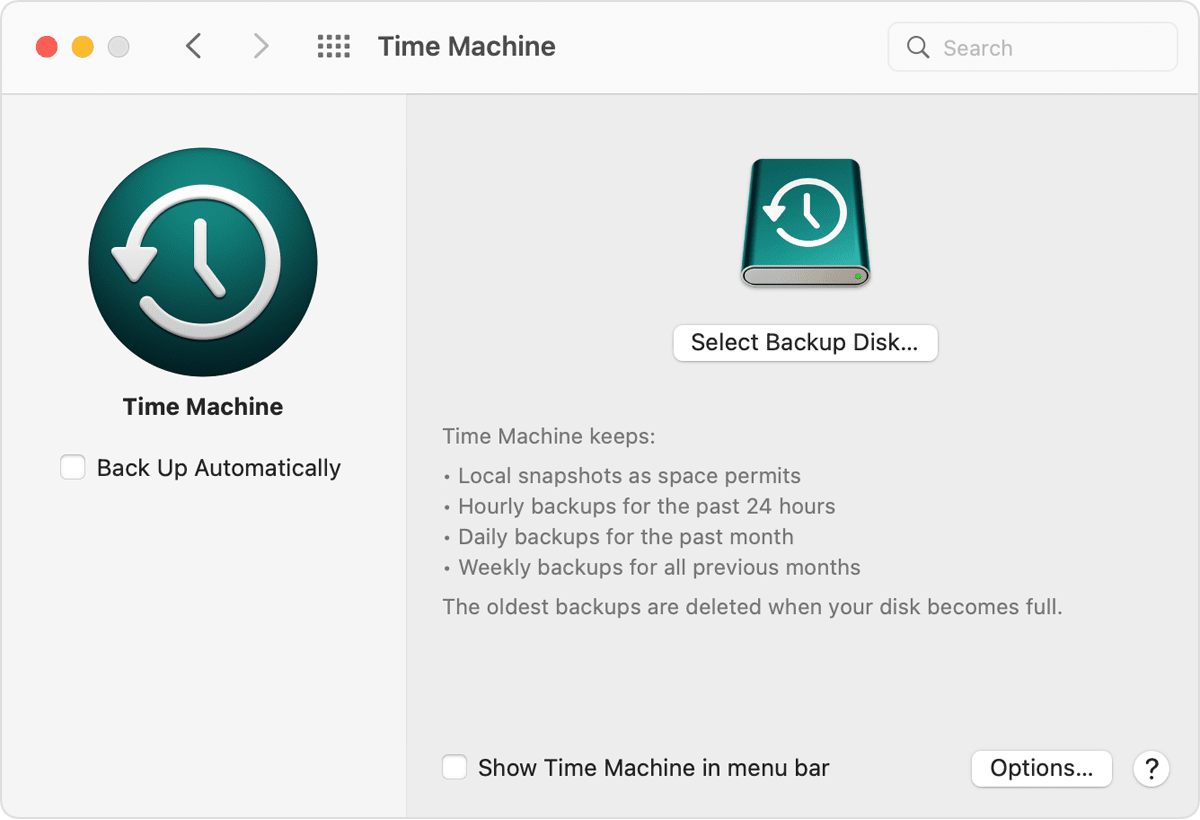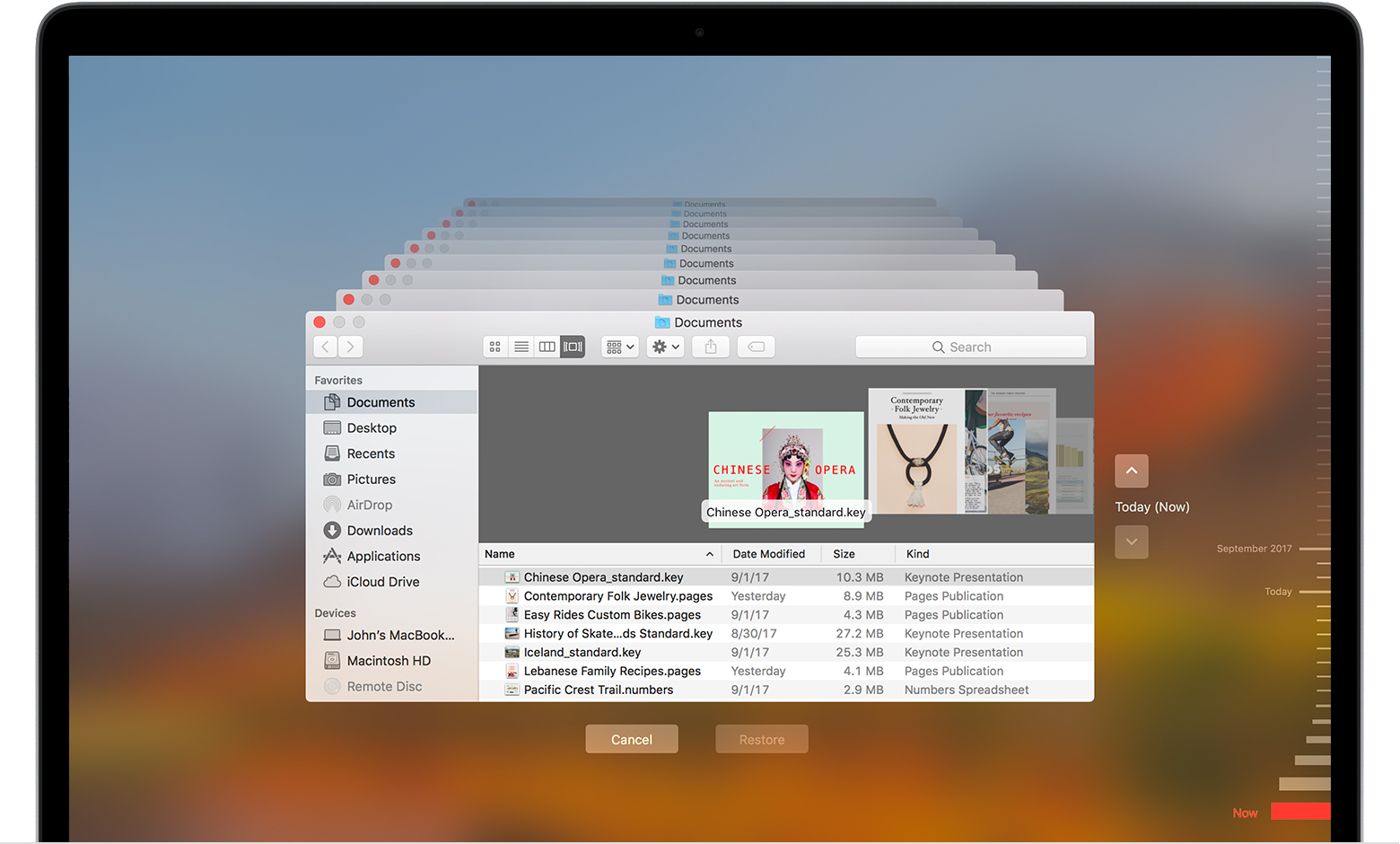

- Mac time machine restore operating system how to#
- Mac time machine restore operating system install#
- Mac time machine restore operating system update#
- Mac time machine restore operating system upgrade#
- Mac time machine restore operating system full#
Preparing the External Driveīefore you can create the installer, you need to format the drive. The next time you upgrade, you might want to make a backup of the previous version's installer, just in case.įor this process, you'll need a 16GB or larger USB flash drive or external hard drive. Moving forward, it's worth remembering that older macOS versions are now harder to download. This is helpful for users trying to downgrade from macOS Monterey to macOS Big Sur or older on M1 Macs, as the default Recovery mode only installs the latest version of macOS. Once you have the specific macOS installer downloaded on your Mac, you can use it to create a bootable disk, from which you can reinstall macOS.
Mac time machine restore operating system update#
The installer will download through the System Preferences' Software Update section and should be available in your Applications folder once done. With the updated Mac App Store, this is no longer possible however, they can still be downloaded through Apple's Support website. Downgrade Using an Older macOS Installerīefore the release of macOS Mojave, it was possible to download older versions of macOS directly through the App Store. You'll be able to see which version of macOS was used to create that backup.įollow the prompts to complete the reinstallation, then restore your files from the backup you created. On the following screen, select the backup you want to restore from. In this case, that's the backup drive you plugged in earlier. On the next screen, click Continue again. When the macOS Utilities screen appears, select Restore From Time Machine Backup and click Continue. On the next screen, select Options to launch Recovery mode. On M1-based Macs, keep holding the Power button on startup till you see the message Loading Startup Options. To do this on an Intel Mac, hold Cmd + R to enter macOS Recovery. Plug your Time Machine disk into your Mac and power it down or restart it.īoot your Mac into Recovery mode. To downgrade using a prior Time Machine backup: This, of course, assumes that you created the backup on an older version of macOS.
Mac time machine restore operating system install#
Using a Time Machine backup is another simple way to install an older version of macOS. Once the installation is complete, restore your files from the backup you created. Walk through the onscreen instructions to complete the rest of the installation process. Once the macOS Utilities screen loads, choose Reinstall macOS (or Reinstall OS X) and click Continue.įollow the prompts and choose your startup disk. You'll notice startup takes longer than normal as macOS Recovery loads. Power on your computer and immediately hold Shift + Option + Cmd + R. Make sure you're fully backed up first because this will erase your startup disk: If your computer is quite old, this will instead download the oldest version that's still available. The process is similar to reinstalling macOS, but will instead download the version of macOS that your computer originally shipped with. You'll need to use the Time Machine or bootable disk method for M1 Macs. Note: This method only works on Intel-based Macs, and can't be used on M1 Macs. Just make sure you have internet access during the installation, as the software will download a previous version of macOS. You can use the built-in macOS Recovery tool to downgrade. Downgrade Using macOS Recovery: Intel Macs OnlyĪssuming your Mac originally came with an older version of macOS installed on it, downgrading is fairly easy. Still, you may realize you need to return to a project that won't work on the latest version of macOS.
Mac time machine restore operating system upgrade#
For that reason, many vendors of this type of software will recommend that you never upgrade your operating system in the middle of a project. This is especially true when it comes to audio-, video-, and graphics-related hardware and software. Certain types of hardware and software might not function correctly after upgrading.
Mac time machine restore operating system how to#
We'll walk you through how to downgrade macOS Monterey or earlier to an older version of macOS.Īpple tries to make macOS upgrades as backward-compatible as possible, but there are still edge cases. However, the downgrading process isn't as easy as it used to be. Even so, you might find that once you've gone through the upgrade process, your system isn't working right.įortunately, if you need to, you can drop back to the previous macOS version you were running.

Mac time machine restore operating system full#
It's always tempting to install the latest version of macOS, full of new features and updates.


 0 kommentar(er)
0 kommentar(er)
